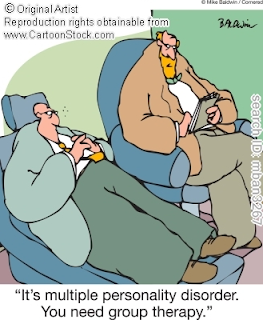Serial killers have specific personality traits, such as
being extremely antisocial or having two different personas. An antisocial personality can cause a killer
to have a very difficult time relating to others on a daily basis. Other times, a killer can appear to have a “normal”
life where he easily holds conversation with various people he sees from day to
day or even with total strangers.
Jeffrey Dahmer is a prime example of a serial killer who
suffered from an
antisocial personality disorder. Very low levels of self-confidence caused him
to feel inferior to others and doubt his self-worth. Dahmer’s lack of confidence led to a very
quiet personality as a child that didn’t change as he became an adult. He only chose to socialize with soon to be
victims during his adult years.
Trying to comprehend his homosexual desires, Dahmer picked
up his first victim,
Steven Hicks and brought him home where they engaged in
sexual intercourse. After they were
finished, Hicks tried to leave and Dahmer felt that he was losing control over
the situation. To regain full control,
Dahmer struck Hicks with a barbell, killing him. Dahmer lacked the social skills to ask Hicks
to stay with him and not leave him alone.
Killing Hicks was the only way he could get what he yearned for,
companionship.
 |
| Steven Hicks, Dahmer's first victim |
Comparatively,
Ted Bundy battled multiple personality
disorder. Many people who met Bundy on
the street saw him as a charming, attractive, and intelligent young man. They wouldn’t have thought that underneath, Bundy
was a twisted, cruel individual capable of murder.
Bundy’s friendly outward personality allowed him to easily
manipulate, assault, and kill many young women.
Women would offer their help when Bundy asked them to help him complete
an urgent task. Instead of completing
the task, Bundy assaulted and killed the young women when they were most
vulnerable and least expected it.
A third common personality trait seen in serial killers is
their lack of guilt, empathy, and remorse for their actions. After committing murder, the serial killer
does not believe his actions are unacceptable and morally wrong. The brain of a serial killer doesn’t release
any feelings of guilt, empathy, or remorse.
Killers also do not view their victims as people, but as objects that
whose sole purpose is for the killer’s own pleasure. Objectifying victims causes the killer to
lack sympathy for his doings.
 |
| A serial killers does not have the proper conscience to realize that murder is unjust |
Be on the look out for next week's post about how inherited genetics can play a role in the motivation of mass murderers.
